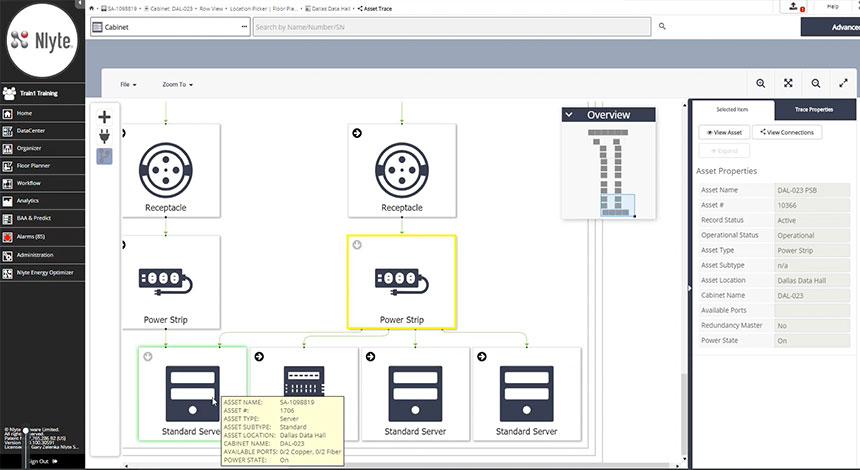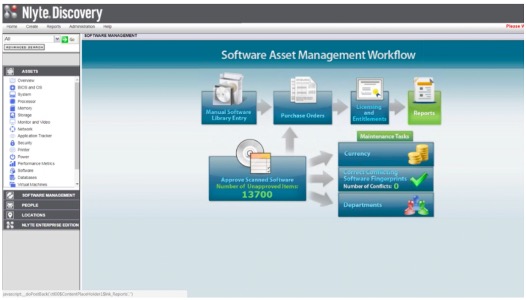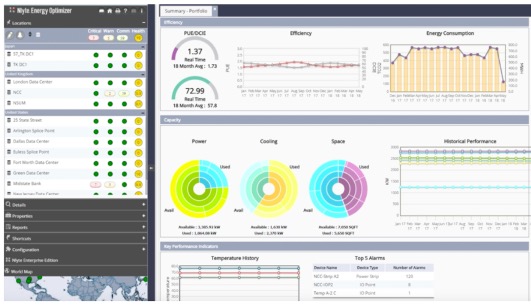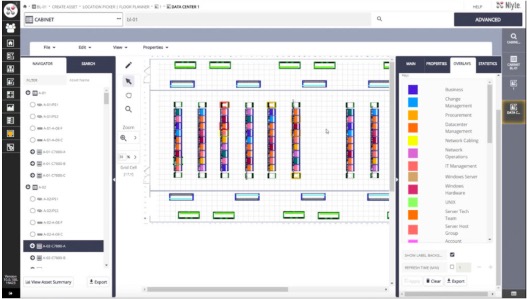
What is DCIM?
Data centers are at the heart of modern organizations, providing the network connectivity and processing power that are critical to business operations.
But the data centers of today are more complex than ever. Infrastructure has changed from small storage rooms with a few servers to robust facilities that house mission-critical systems and hardware.
Managing assets and tracking resources across all those systems isn’t easy. So how can you optimize workloads and make your data centers more efficient?
This is where Data Center Infrastructure Management, or DCIM, comes in.
If you’re not using DCIM to manage your data center, you’re missing out on opportunities to increase efficiency and optimize utilization of existing assets.
This guide will give you everything you need.
What is DCIM, and Why Do You Need It?
Data Center Infrastructure Management, or DCIM, involves managing all aspects of a data center and optimizing its efficiency. It includes maintaining existing assets, monitoring network performance, and planning for future contingencies.
DCIM gives data center operators a full picture of the entire facility — server performance, space utilization, energy usage, hardware health, and more.
In the past, admins would rely on spreadsheets and homegrown databases, but these weren’t always practical. They required handling a large volume of data and making trips in person just to see where new servers could be added.DCIM software makes everything accessible from a single interface.

It gives admins the ability to collect, store, and analyze information about a data center’s entire infrastructure — all in real-time and without having to physically go on site.
DCIM is driven by enterprise class software that adheres closely to Information Technology Infrastructure Library (ITIL) standards — frameworks that standardize the planning and maintenance of IT services that businesses rely on.
DCIM software is intended to enable data center operators the ability to efficiently run data center operations and improve infrastructure planning and design.
DCIM software automates labor-intensive activities, such as workflow management, provides audit trails, and improves visibility across IT and business systems to maximize data center usage.
It replaces tools like Excel, Visio, and home-grown databases with enterprise class architecture, real-time monitoring, and proactive alarms.
In short, DCIM delivers key data in real-time across an entire data center infrastructure. Instead of relying on guesswork, data center operators can make informed decisions about capacity and performance.
Let’s take a closer look at why more companies are turning to DCIM technologies to manage their data centers.
What Are the Benefits of DCIM Software?
Modern data centers aren’t like what they were before. To get more out of existing assets and make accurate forecasts, you need the right tools. The following looks at some of the key benefits of DCIM software.
Better Asset Management
Data centers house various components, including servers, routers, switches, and other network equipment. Managing each asset is crucial to keep your data center running with minimal downtime.
The problem with spreadsheets and homegrown databases is the risk of inaccurate records. If an admin forgets to update records, you’re working off outdated information.
DCIM software helps with asset management by providing a centralized database that maintains accurate records of all assets. This enables operators to keep close tabs on all hardware from deployment to decommission.

Increased Operational Efficiency
How assets are deployed in a data center has an impact on overall efficiency. Poor design can keep equipment from operating at optimal levels and lead to higher costs.
DCIM software lets you track resource usage and power consumption over time, and measure them against performance benchmarks. More efficient data centers translate to better workflow management, ensuring that processes aren’t using more resources than necessary.
Improved Capacity Planning
Capacity planning is all about ensuring that data centers have the resources to handle current and future workloads. Poor planning can lead to performance issues and costly downtime.
But there’s an important caveat: Planning too much capacity can lead to idling resources, while planning too little can result in performance bottlenecks.

DCIM software facilitates capacity planning by identifying current usage and making forecasts about future needs. This is made possible through 3D renderings, allowing administrators to make key decisions about capacity.
Environment Monitoring
Factors like heat, humidity, and moisture need to be carefully monitored. Overheating can cause servers to shut down and moisture can lead to equipment failure.
DCIM solutions can address these effects. Environmental sensors can be fitted into data centers and feed real-time data to DCIM software.
Admins can monitor factors like temperature, humidity, and airflow, and receive alerts when certain thresholds are exceeded.
Cost Reductions
DCIM software can result in significant savings by providing a detailed breakdown of factors that affect cost — energy usage, space utilization, etc.
DCIM software enables you to determine how much power certain components are consuming and at what rate. With this information, you can identify inefficient servers and replace them with more efficient hardware.
The cost of data center downtime can be significant in terms of lost revenue. DCIM software allows you to properly monitor all systems and take steps to address problems before they can escalate further.
What Are the Components of DCIM?
A comprehensive DCIM solution consists of the following.
Asset Management
Data centers are composed of various components. A clear view of all data center assets within a facility is crucial for improving efficiency and reducing downtime.
Data center managers should have detailed descriptions of all equipment in the data center without having to physically be on site.
Change and Workflow Management
Data centers undergo frequent changes. Equipment is constantly being added, removed, and upgraded to support new functions and capabilities.
A core component of DCIM solutions is facilitating change management. It helps data center managers plan new changes and ensures that processes are still carried out.
Real-Time Data Collection
There are two types of data that must be collected. The first is data about the assets in the data center and their power usage. The second is data about environmental factors within the infrastructure itself.
This data is typically collected through sensors and other monitoring devices, and then fed in real-time to DCIM software.
Visual Dashboards
The amount of data that can be collected about data centers is vast. But raw data by itself isn’t all that helpful.
Dashboards are another component of DCIM solutions. They enable data center administrators to visualize data in real-time using formats that are much easier to understand.

Justifying the Cost of DCIM Software (a Synopsis)
- People: Improve productivity by automating labor intensive activities and shared workflow to avoid conflict and duplication of efforts.
- Networking: Understand interconnectivity between physical assets and network cabling to virtual environments and their physical hosts.
- Processes: Centralize and test processes to ensure consistent adherence and test what-if scenarios.
- Requirements: Collect and track stakeholder requirements to ensure SLAs meet end-user demands.
- Policies: Automated workflow and centralized containment of processes and requirements reduces human error and provides traceability for out of compliance conditions.
- Resources: Improve efficiencies by better understanding asset, space, and power usage. Ensure facilities, IT Ops, and data center personnel are acting together.
- Asset Lifecycle Management: Increase utilization and performance by managing assets from the time they land on the receiving dock, throughout their life in production, all the way through decommissioning.
Final thoughts
Managing all the moving parts within a data center is no easy feat. Even a small oversight can lead to equipment failure and costly downtime.
DCIM solutions provide companies with the means to manage every part of their data centers and make informed decisions about capacity.
View a demo today to see how Nlyte’s DCIM software can help you manage and automate the management of all your resources across your computer infrastructure.
